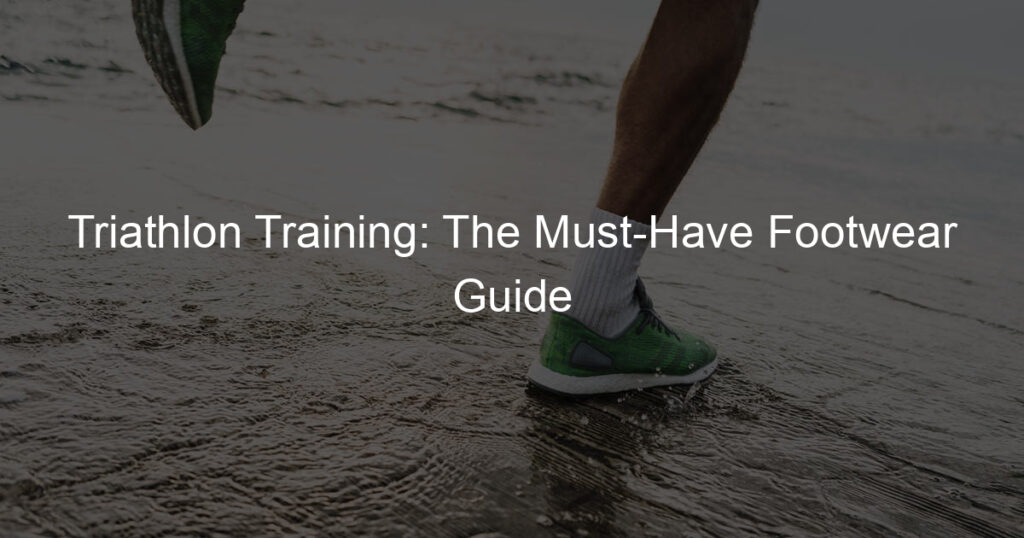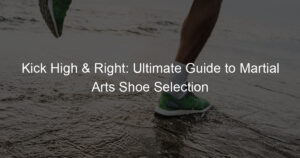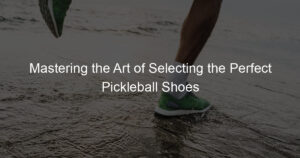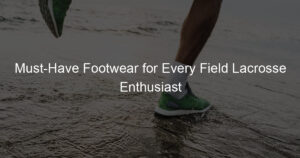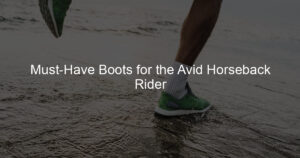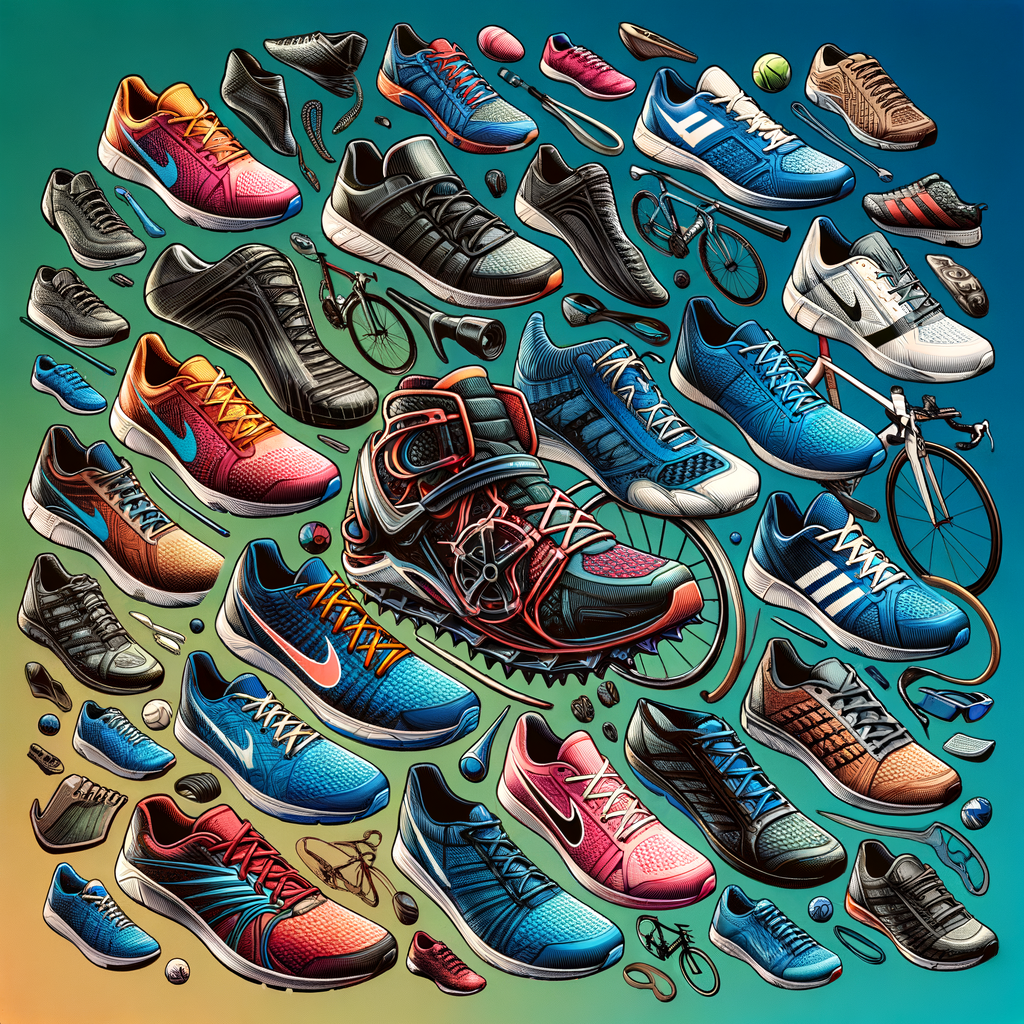
Introduction to Triathlon Training Shoes
Triathlon training is a demanding sport that requires not only physical strength and endurance, but also the right gear. One of the most important pieces of equipment in a triathlete’s arsenal is their footwear. In this section, we will delve into the importance of choosing the right shoes for triathlon training and how they can significantly affect your performance.
- Importance of the Right Footwear in Triathlon Training
- How Shoes Can Affect Performance
Choosing the right footwear for triathlon training is crucial for several reasons. First, the right shoes provide the necessary support and cushioning for your feet, reducing the risk of injuries. They also help in maintaining proper form and posture during training, which is essential for efficient performance. Moreover, the right shoes can enhance comfort during long training sessions, making it easier for you to focus on your technique and endurance.
The type of shoes you wear during triathlon training can significantly affect your performance. For instance, shoes with inadequate cushioning can lead to foot fatigue, reducing your training efficiency. On the other hand, shoes with too much cushioning can hinder your natural foot movement, leading to inefficient running form. Therefore, it’s important to choose shoes that offer the right balance of cushioning, support, and flexibility to optimize your performance.
In the following sections, we will explore the essential footwear for triathlon training, provide a comprehensive guide on triathlon training gear, and share some success stories of athletes who achieved remarkable results with the right footwear. Stay tuned!
Essential Triathlon Footwear
When it comes to triathlon, the right footwear can make a significant difference in your performance. This section will focus on the essential footwear for triathlon – running shoes.
Triathlon Running Shoes
Running shoes are a critical part of your triathlon gear. They need to offer comfort, support, and durability to withstand the rigors of the race. Let’s dive into the key features to look for, the top brands and models, and how to choose the right size.
- Key Features to Look For
- Lightweight: Light shoes can help you run faster and use less energy.
- Good Fit: Shoes should fit well to prevent blisters and discomfort.
- Durable: Look for shoes that can withstand the wear and tear of training and racing.
- Quick-drying: Since you’ll be transitioning from swimming to running, your shoes need to dry quickly.
- Top Brands and Models
- How to Choose the Right Size
- Measure Your Foot: Use a ruler or measuring tape to measure your foot length.
- Try Them On: Always try on shoes with the socks you plan to wear during the race.
- Check the Fit: There should be a thumb’s width of space between the end of the shoe and your longest toe.
When choosing triathlon running shoes, consider the following features:
Several brands offer excellent triathlon running shoes. Here are some of the top ones:
| Brand | Model |
|---|---|
| Asics | Gel-Noosa Tri 11 |
| Brooks | Ravenna 10 |
| New Balance | 1500v4 |
| Saucony | Fastwitch 9 |
Choosing the right size is crucial for comfort and performance. Here’s how:
Cycling Shoes for Triathlon
When it comes to triathlon training, the right footwear can make a significant difference. This is particularly true for cycling, where the correct shoes can improve performance and comfort. Let’s delve into the importance of cycling shoes in triathlon and some recommended options for training.
- Importance of Cycling Shoes in Triathlon
Cycling shoes are an essential piece of triathlon gear. They are designed to enhance power transfer from your feet to the pedals, allowing you to cycle faster and with less effort. Unlike regular shoes, cycling shoes have a stiff sole that provides stability and reduces energy loss during pedaling. They also have a secure fit to prevent your foot from sliding around, which can lead to discomfort or injury.
Moreover, cycling shoes are equipped with cleats that clip into the pedals. This feature enables you to pull up on the pedals as well as push down, effectively doubling your power output. It also keeps your feet in the correct position, reducing the risk of strain or injury. In a triathlon, where every second counts, the benefits of cycling shoes can give you a competitive edge.
- Recommended Cycling Shoes for Triathlon Training
With numerous brands and models on the market, choosing the right cycling shoes can be overwhelming. Here are a few recommendations that are well-suited for triathlon training:
| Brand | Model | Key Features |
|---|---|---|
| Shimano | TR9 | Lightweight, breathable, quick-drying, dual-strap design for quick transitions |
| Garneau | Tri X-Speed III | Good ventilation, easy to put on and take off, affordable |
| Sidi | T-4 Air Carbon | High-quality construction, comfortable, efficient power transfer |
Remember, the best cycling shoe for you depends on your individual needs and preferences. Factors such as comfort, fit, and budget should all be considered. It’s also a good idea to try on several options before making a decision. With the right cycling shoes, you’ll be well-equipped to tackle the cycling portion of your triathlon training.
Swim Shoes for Triathlon
Swim shoes, also known as aquatic shoes, are an essential part of triathlon training gear. They provide numerous benefits and are designed to enhance the performance of triathlon athletes. Let’s delve into the advantages of swim shoes and some of the best options available on the market.
- Benefits of Swim Shoes in Triathlon Training
Swim shoes are specifically designed to protect your feet while swimming, walking, or running in water. They offer several benefits:
- Protection: Swim shoes protect your feet from sharp objects, hot surfaces, and rough terrains.
- Traction: They provide excellent grip on slippery surfaces, reducing the risk of slips and falls.
- Comfort: Swim shoes are lightweight and comfortable, allowing for improved performance.
- Speed: They are designed to enhance speed in water, which is crucial for triathlon athletes.
- Best Swim Shoes for Triathlon Athletes
Choosing the right swim shoes can significantly impact your performance in a triathlon. Here are some of the best swim shoes for triathlon athletes:
| Brand | Model | Key Features |
|---|---|---|
| Speedo | Hydro Comfort 4.0 | Lightweight, water-draining holes, quick-drying, excellent traction |
| Aleader | Mesh Slip-On | Comfortable, breathable mesh, water drain outsole, excellent traction |
| Adidas | Outdoor Jawpaw II | Quick-drying, superior grip, protective toe cap |
Remember, the best swim shoe for you depends on your personal needs and preferences. Always try on different models and sizes to find the perfect fit.
Best Footwear for Triathlon Training
When it comes to triathlon training, the right footwear can make all the difference. The best shoes can enhance your performance, provide comfort, and prevent injuries. Let’s delve into the world of triathlon training shoes and find out which ones are the best for you.
- Comparison of Top Triathlon Training Shoes
- Factors to Consider When Buying Triathlon Training Shoes
- Fit: The shoes should fit you perfectly. They should not be too tight or too loose.
- Comfort: Comfort is crucial in triathlon training. Look for shoes with good cushioning and breathability.
- Durability: The shoes should be able to withstand the rigors of triathlon training.
- Performance: The shoes should enhance your performance and not hinder it. Look for features like stability, flexibility, and grip.
There are several top-notch triathlon training shoes available in the market. Here’s a comparison of the best ones:
| Brand | Model | Features |
|---|---|---|
| Asics | Gel-Noosa Tri 11 | Lightweight, breathable, and offers excellent cushioning |
| Brooks | Trance 10 | Provides stability, has a moisture-managing element, and a segmented crash pad for smooth transitions |
| New Balance | 1080v10 | Features a Fresh Foam midsole, Ortholite sockliner, and a Hypoknit upper for comfort and support |
Choosing the right triathlon training shoes is not just about the brand or the price. Here are some factors you should consider:
Remember, the best footwear for triathlon training is the one that suits your individual needs and preferences. So, take your time, do your research, and choose wisely.
Triathlon Training Gear: A Comprehensive Guide
Triathlon training requires not only physical endurance and mental strength, but also the right gear. Among the most important pieces of equipment for any triathlete is their footwear. Let’s delve into the world of triathlon footwear and understand its importance.
Footwear for Triathlon Athletes
Footwear plays a crucial role in a triathlete’s performance. It’s not just about running; it’s about comfort, support, and durability. Let’s explore the importance of investing in quality footwear and how to maintain it for long-lasting use.
- Importance of investing in quality footwear
- How to maintain and care for your footwear
- Clean your shoes after each use to remove dirt and sweat.
- Avoid machine washing your shoes as it can damage their structure and cushioning.
- Store your shoes in a cool, dry place to prevent the growth of bacteria and fungi.
- Replace your shoes every 300-500 miles to ensure optimal support and cushioning.
Quality footwear is a worthwhile investment for any triathlete. It provides the necessary support to your feet, reducing the risk of injuries. A good pair of shoes can also enhance your performance by ensuring comfort and stability during your run. According to a study, athletes who wore quality footwear reported less fatigue and better performance compared to those who didn’t.
Maintaining your footwear is just as important as investing in a good pair. Here are some tips:
Investing in quality footwear and taking proper care of it can make a significant difference in your triathlon training. Remember, your feet are the foundation of your performance, so treat them well!
Other Essential Triathlon Training Gear
While footwear is a critical component of triathlon training, it’s not the only gear you need. Helmets, wetsuits, and other gear play a significant role in your performance and safety. Let’s delve into why these items are important and how you can choose the right ones for your training.
- Importance of helmets, wetsuits, and other gear
- How to choose the right gear for your training
- Helmet: Look for one that fits snugly and sits level on your head. It should meet safety standards and have good ventilation to keep you cool.
- Wetsuit: It should fit tightly but allow you to move freely. Consider the water temperature where you’ll be training or racing when deciding on the thickness.
- Goggles: They should fit comfortably around your eyes without too much pressure. Look for ones with anti-fog and UV protection.
- Clothing: Choose materials that wick away sweat and dry quickly. Consider tri suits, which are designed for all three sports and have a built-in pad for cycling comfort.
Just as running shoes protect your feet, a helmet safeguards your head during the cycling portion of a triathlon. It’s not just about complying with race rules; it’s about protecting your brain, the most vital organ in your body. Wetsuits, on the other hand, are designed to keep you warm in cold water and improve your buoyancy, helping you swim faster.
Other gear like goggles protect your eyes from chlorine and improve your visibility underwater. Triathlon-specific clothing is designed for quick transitions between sports and to keep you comfortable throughout the race. In a nutshell, each piece of gear serves a specific purpose to enhance your performance and safety.
Choosing the right gear can be overwhelming, but it doesn’t have to be. Here are a few tips:
Remember, the right gear for you depends on your specific needs and preferences. It’s always a good idea to try different options and see what works best for you.
Triathlon Footwear Guide: Key Takeaways
As we conclude our comprehensive guide on triathlon footwear, let’s summarize the key points we’ve discussed. These points will help you understand the importance of choosing the right footwear for your triathlon training and competition.
- Summary of the importance of the right footwear
- Recap of the best footwear for triathlon training
Choosing the right footwear for triathlon training is not just about comfort, it’s about performance and safety too. The right shoes can help you avoid injuries, improve your running efficiency, and ultimately, enhance your overall performance. Remember, your feet are the foundation of your triathlon performance, so investing in the right footwear is crucial.
We’ve discussed several top-rated triathlon shoes in this guide, each with its unique features and benefits. Some of the best options include the Asics Gel-Noosa Tri 11, the Brooks Ghost 12, and the Hoka One One Clifton 6. These shoes offer excellent cushioning, breathability, and quick-drying capabilities, making them ideal for triathlon training. However, the best shoe for you will depend on your personal preferences, running style, and specific training needs.
Remember, the right footwear can make a significant difference in your triathlon training and performance. So, take your time, do your research, and choose the shoes that best meet your needs. Happy training!
Case Studies: Success Stories with the Right Footwear
Now that we have discussed the importance of the right footwear in triathlon training, let’s look at some real-life examples. Here are two case studies of athletes who experienced significant improvements after switching to the right shoes.
-
How the Right Shoes Improved Performance: Athlete A
Athlete A, a seasoned triathlon competitor, was struggling with foot discomfort and slower running times. After consulting with a sports podiatrist, Athlete A switched to a pair of shoes specifically designed for triathlon training.
Within weeks, Athlete A noticed a significant improvement. His foot discomfort disappeared, and his running times improved by 15%. He also reported feeling more confident during his training sessions and competitions.
“The right shoes made a huge difference,” Athlete A said. “I feel like I’m running on air. It’s amazing how much faster and more comfortable I am.”
-
Transitioning to Better Footwear: Athlete B’s Experience
Athlete B, a novice triathlete, was using regular running shoes for her training. She often experienced blisters and foot pain after her training sessions. After reading about the importance of proper footwear, she decided to invest in a pair of triathlon-specific shoes.
The transition was a game-changer for Athlete B. Not only did her foot pain and blisters disappear, but she also noticed an improvement in her performance. Her running times decreased by 10%, and she felt more stable and secure during her training sessions.
“I wish I had made the switch sooner,” Athlete B said. “The right shoes really do make a difference. I feel more confident and perform better in my training.”
As these case studies show, the right footwear can make a significant difference in triathlon training. It can improve performance, increase comfort, and boost confidence. So, make sure you invest in the right shoes for your triathlon training.

